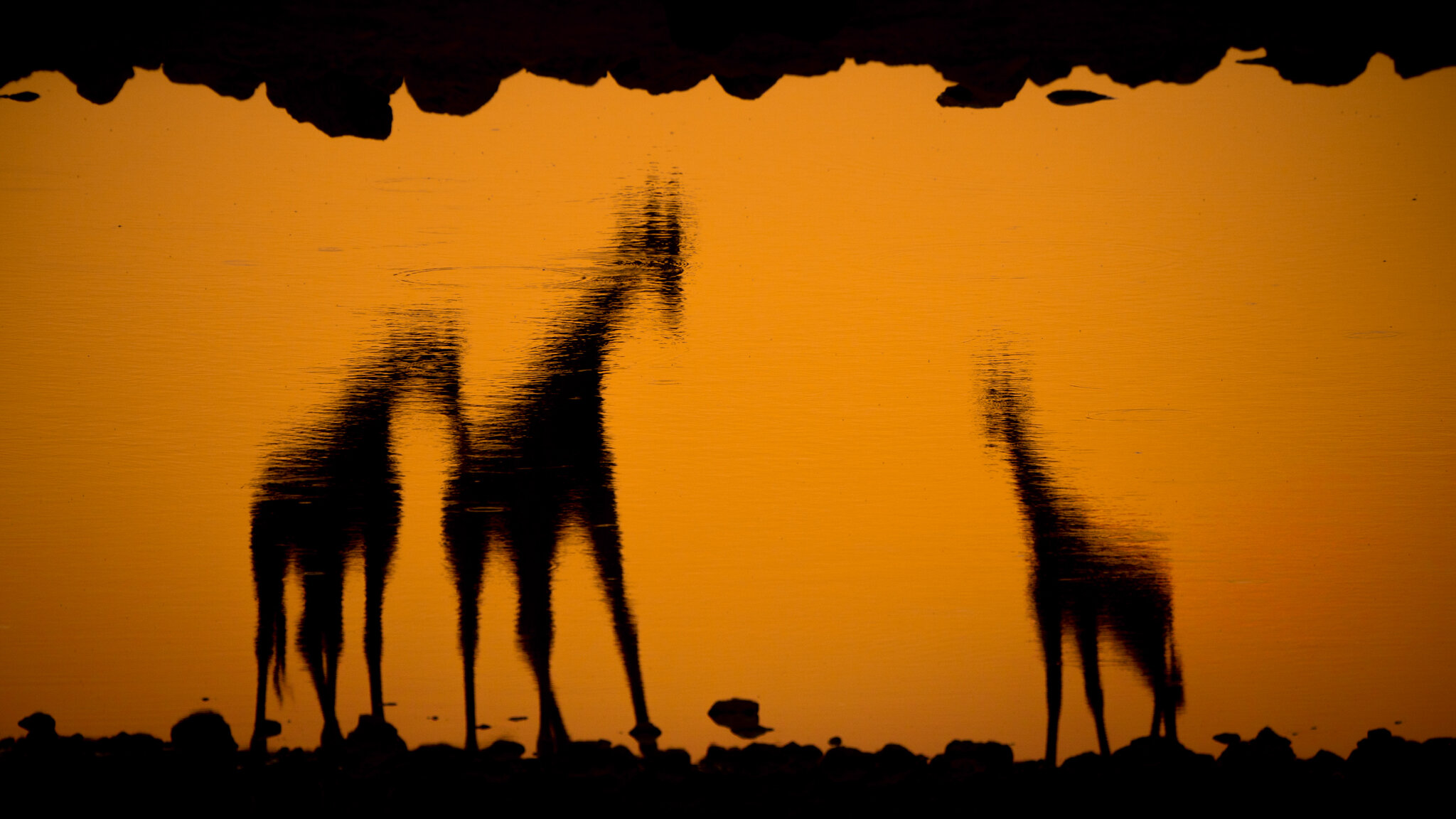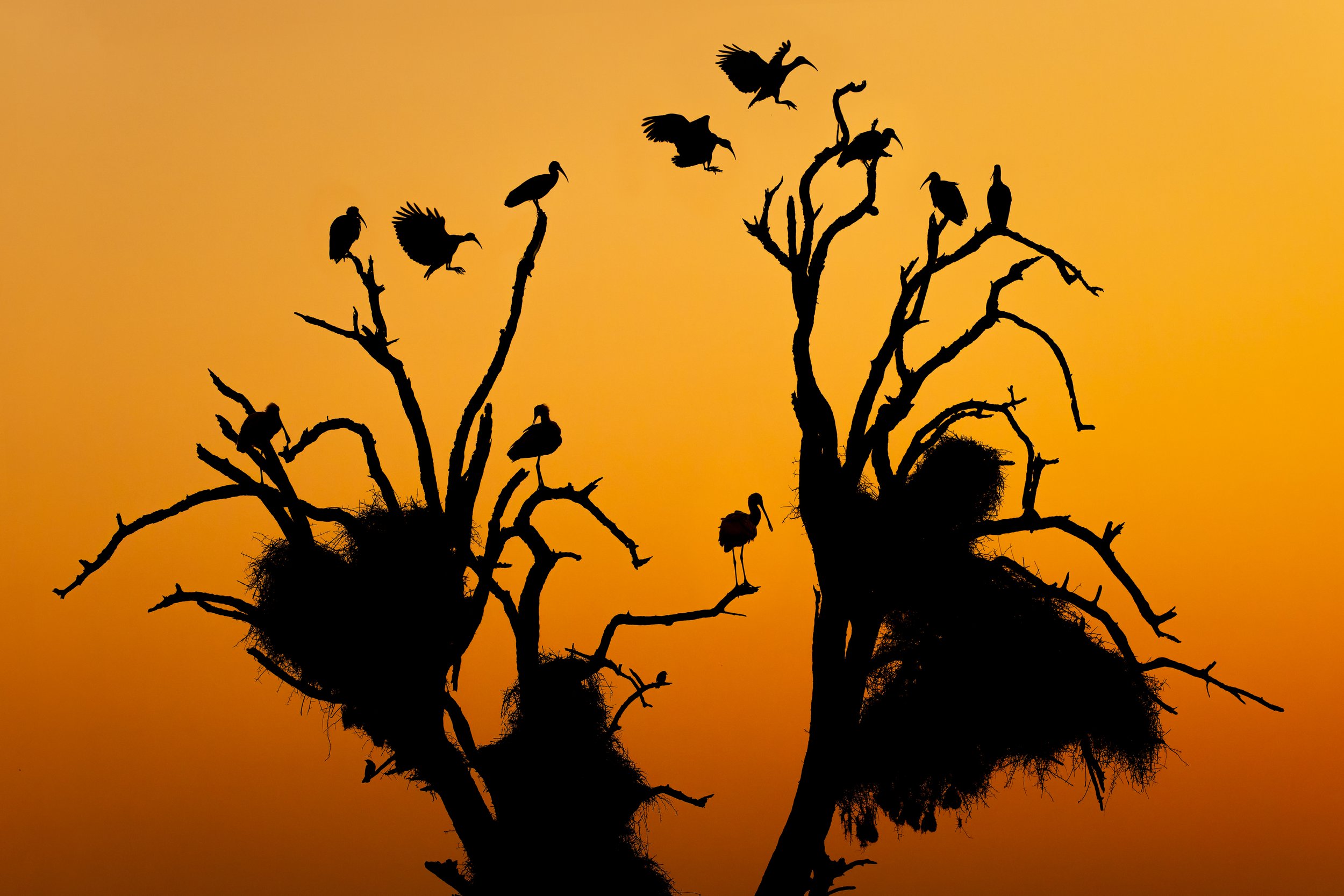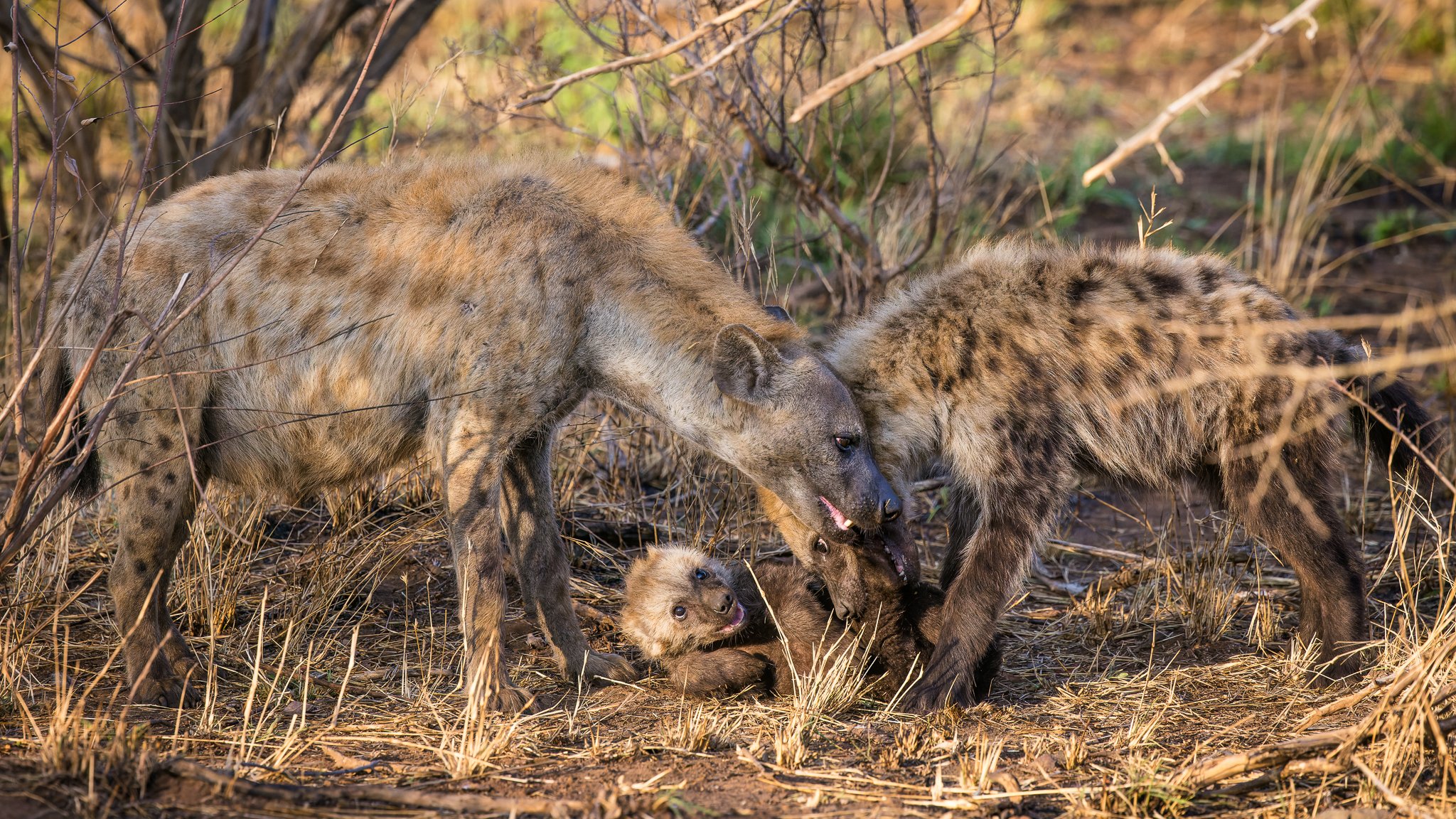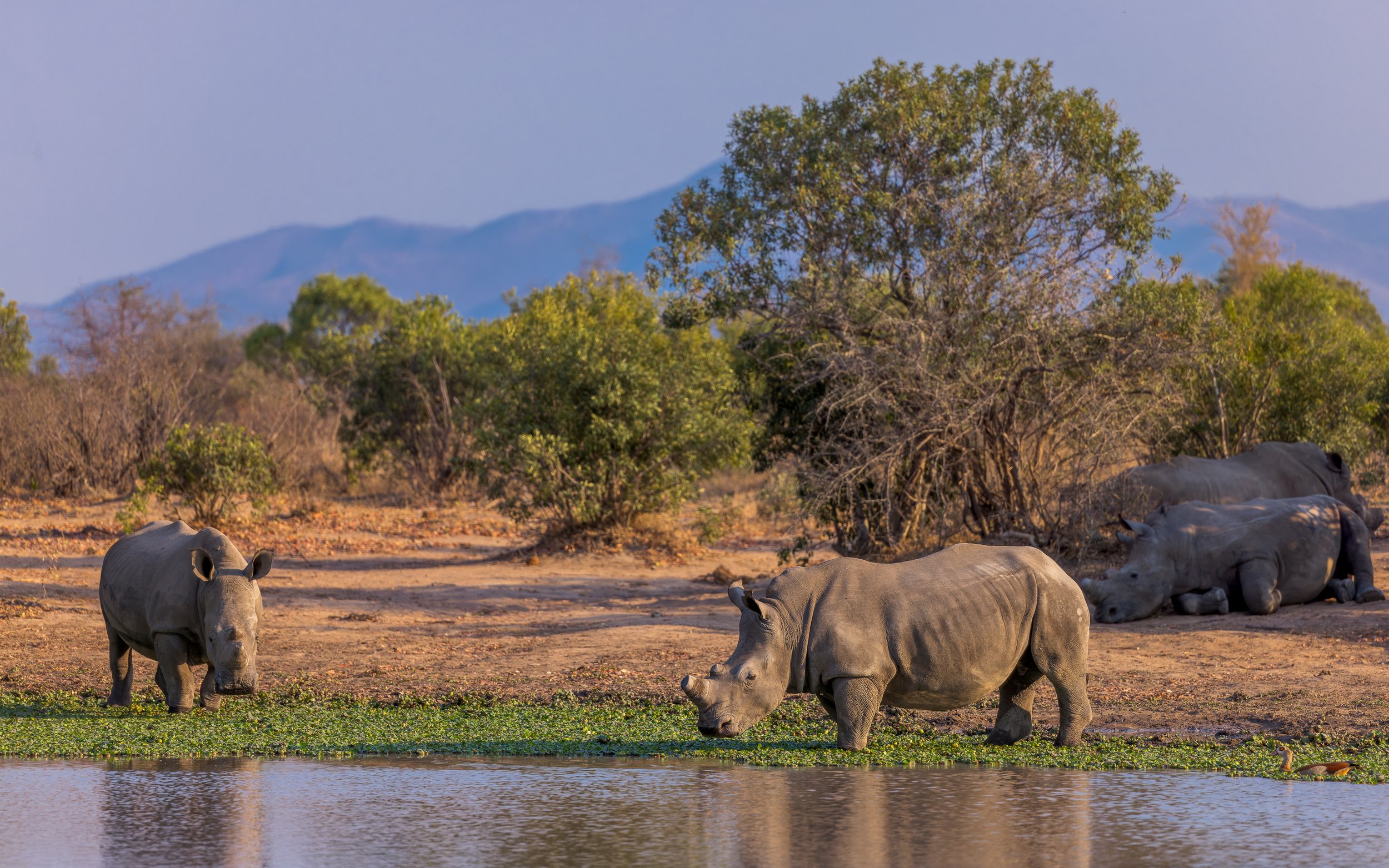Self-drive in Africa - a photographer's guide
Africa has some of the best guides, drivers and accommodations for wildlife travel. From the ultra-budget to the ultra-luxury, there's every kind of camp and lodge you can imagine. Since my first trip to Africa was in Kenya, I experienced the African bush first as a fully guided and catered safari. This is quite similar to how we experience the bush back home in India. We go somewhere and rendezvous with an experienced guide who shows us the animals. Then we sleep at a reasonably comfortable, if budget, accommodation that provides us electricity, food, decent beds, and bathrooms.
This way of seeing and photographing wildlife is rather convenient, but the experience stands on the shoulders of many individuals and organisations that help us survive and navigate the bush. Left to our own devices, many of us will struggle in the wilderness.
Why we Indians don’t usually self-drive
The average Indian wildlife photographer doesn't experience a rugged, outdoors culture. I'm not speaking of the handful of professionals who earn a living from their photo or video work but of the vast majority of amateurs and enthusiasts, such as yours truly. There are many reasons for this. I, for one, was a mama's boy. My parents didn't let me learn many life skills until quite late, be it cooking, washing, or cleaning. I suspect many Indian men have had similar experiences growing up. Like most outdoorsy pursuits, nature photography is male-dominated, so we men set the tone with our ineptitude, even for women who may be more hands-on than us.
Wildlife travel in India is usually a guided, and curated experience
Our popular wildlife destinations are also not conducive to exploring by ourselves. We can't camp in any of our major parks, so you have little option but to find lodging. The park authorities don't allow you to self-drive, either. Only registered naturalists and guides can navigate our parks. All these reasons made me a relatively sedate photographer who expected someone to serve me up sightings and someone else to make my bed and food.
When I first visited South Africa, I noticed how common it was to self-drive. But I was cagey about driving in a new country, so I asked a guide to drive me to Pilanesberg. The drive was fine, but I couldn't help but admire every other wildlife enthusiast driving around the park, finding wildlife for themselves. I was astonished by the vast network of state-run camps in South Africa's national parks. In India, we rarely get the chance to stay inside our forests, and when we do, the experience is so coveted that there's a black market around it.
Why you shouldn’t camp or self-drive
For the last six years, though, I've made a few camping and self-driving trips to southern Africa, and the experience has been revelatory. But self-drives aren’t for everyone. Here’s why you shouldn’t go on a self-drive safari.
If making your bed and cooking your food feels like a chore, self-drive camping trips aren’t for you.
Many camps are unfenced. If you’re scared of animal visitors like jackals and hyenas who love our leftovers or critters like scorpions and spiders, steer clear of such trips.
Something will go wrong. That’s a guarantee. The idea is to problem-solve and move on. If you’re looking for smooth sailing, I don’t recommend self-drives.
You will deal with a fair bit of cognitive load. Car batteries, tyre pressure, and managing your limited charging points are all little thoughts that can overwhelm you if you’re not in the right mindset.
Experienced guides help you make better decisions about where to find predators in parks with many tracks. You may have poorer sightings than others, depending on your luck and tracking skills. Unlike parks like the Maasai Mara or the Sabi Sands, where guides communicate over long-range radio, you won’t have assured predator sightings when you self-drive. If that bothers you, you know what I’ll say.
Without power, shade, showers or flushing toilets, it may not always be easy to camp
The bottom line is that if you think of self-driving as an ordeal to endure and not an experience to savour, you’re best off sticking with a more curated trip.
Why you should camp and self-drive
While I don't mind the luxury of gourmet meals and easy sightings, I'll go out on a limb and say that I find the DIY self-drive a far more satisfying experience than a guided safari. Here’s why.
Things that are hard to bear are sweet to remember. Self-drive experiences are rugged, and the benign masochism adds to the memorability of the trip. You’ll deal with dust, sand, mud, critters, faulty equipment, bad roads and whatnot. Those little niggles can often become bragging rights to claim and stories to remember and retell.
You’ll get good at basic bushcraft. You’ll learn to pitch your tent, make a fire, cook outdoors, barbecue, and keep your stuff safe from curious animals. After a few rounds of burnt and over-seasoned steaks, I’ve gotten pretty good at the art of braai!
Self-driving will make you a better driver, navigator and naturalist. You’re responsible for the sightings you find and the ones you miss. You’ll become better at predicting animal behaviour. As you spend more time in the bush, you’ll learn to identify bird calls and follow animal tracks. You’ll know when to inflate and deflate a tyre and how to navigate challenging roads. With experience, you’ll learn exactly where to position your vehicle to get the best shot in the circumstances.
Your experience in the wilderness becomes super flexible. If you want to get up early and stay out for the stars, Bob’s your uncle. Spend as much time at an animal sighting as you like. Move your vehicle to micro-position yourself without feeling like you’re annoying someone. Enjoy the additional space and privacy in your car. Unlike a guided safari, you’re in total control of your time out there.
You’ll improve your social skills. Many sightings depend on being friendly and helping others along the way. What goes around comes around, especially in the bush. For socially awkward people like me, the bush is a great place to learn how to interact with strangers and seek and share helpful information.
Bringing down a tent and setting off, takes very little time.
You’re up and about in no time. In Botswana, our vehicle was our home. Each morning, we’d get up, make our coffee, pull down our tent in minutes, and we were ready to go. When leaving a destination, we were mostly packed up. No carrying our gear to the car, no packing suitcases before leaving a place. Whenever we needed to, we could just up and leave.
You won’t pay a premium where it makes no difference. Guided activities make a difference where specialised knowledge is handy. But in some places, being in the right place is all that counts. For example, at Nxai Pan, in the dry season, it doesn’t matter if you pay $1600 a night for a couple at Kwando Lodge or $40 a night at the humble South Camp. Everyone ends up at one waterhole where all the animals congregate. There are many such destinations all over Africa where a little research can save you a lot of money.
Some places are only for campers. Kubu Island, for example, is one of those magical places you camp or don’t visit. In fact, most places with dark skies don’t have fancy lodges that need lots of light. If astrophotography is on your mind, you’ve got to be willing to camp.
Camping and dark skies go hand in hand
You’re out there all the time. In countries like Botswana, most camps are unfenced. This means that wildlife, predators included, walk through your campsite without a second thought. We’ve had elephants, jackals, lions, hyenas, and several antelopes visit our campsites when we visited Botswana. I find that lack of separation thrilling.










If your kids enjoy the outdoors, this is a great way to introduce them to an authentic experience in the bush. Visiting Kruger in 2022 on a self-drive safari, was one of our family highlights. Between all the animal sightings, the braai and extended picnics in the wilderness, my kids enjoyed every bit of our time out there.
My kids and I enjoyed every minute of our Kruger self-drive
Most importantly, you’ll enjoy taking it slow. When I’m in the Mara, I enjoy my guide, Simon, who is skilled at finding me great predator sightings. But those action-packed trips have little room to sit back and observe a less charismatic animal go about its business. Africa is full of breathtaking scenery. You must often spend time with a particular animal at a specific place to let a scene develop into a good photo. Self-drives afford you that space and freedom.
Don’t get me wrong. Nothing stops me from taking it slow in the Mara but my own FOMO. But on a self-drive trip, my mindset changes. I can’t explain why, but I’m happier to stick with a buffalo herd kicking up the dust in the morning light than to push hard for a predator sighting.
Assuaging common self-drive concerns
Undoubtedly, self-drives can be a daunting experience for anyone who hasn’t driven outside their country before, especially for mama’s boys like me. Let me assuage those concerns for you.
Self-driving in Southern Africa is relatively standard. You’re not a pioneer - more than 1.5 million people enjoy this experience safely each year.
Many reliable rental agencies provide fully equipped vehicles for self-drive. I’ve booked six rentals to date, and touchwood, I haven’t yet suffered even a punctured tyre. They provide fully equipped camping vehicles and incredible service across Southern Africa.
The road network between destinations is excellent, except for a few remote locations. If there’s a wrong road, it’s usually well-documented by other overlanders, so you know what you’re getting into.
Unlike East Africa, the roads inside the parks are very well-marked, so there’s little chance of losing your way. Between GPS, Google Maps, Maps.me and good old books and park guides, there’s enough information for you to plan a rewarding game drive.
The community supporting this experience is just as robust. There are online forums to discuss every significant wildlife destination in Southern Africa. Enthusiasts have built apps to report sightings at parks like the Kruger, making game drives relatively easier. At SANParks-run camps, sighting boards are handy if you don’t have internet connectivity. As I’ve mentioned earlier, fellow campers usually help each other out - being nice to others is the currency that often buys you great information about sightings.
A fellow camper alerted us to this lion sighting
Tips and tricks for a great self-drive safari
You can’t just expect to turn up in some part of Africa and start cracking images of a lifetime. Good photographic outputs take thoughtful planning and execution. If I’ve convinced you to self-drive in Africa, here’s some advice to help you make the most of your trip.
Give yourself time
Guides are good at finding wildlife because they have experience being out in the bush, in specific destinations. If your natural history skills are decent, you can become familiar with a location by giving yourself time there. Southern Africa’s parks are country-sized.
At 50,000 sq km, the Central Kalahari game reserve is the size of Costa Rica.
The Kgalagadi Transfrontier National Park is about the size of Switzerland.
Touring Moremi and Khwai is like exploring an island as large as Mauritius.
The Kruger ecosystem is about 30,000 sq km - the size of Belgium.
Etosha National Park is as big as Israel.
Each wilderness area is a patchwork of roads and tracks that take time to wrap your head around. I recommend spending more time in fewer locations inside a park and resisting the temptation of visiting many places. Pick a beautiful habitat with good wildlife density and back your luck and skills to find good sightings over an extended stay. That way, you’ll improve your knowledge about the areas you visit and slow yourself down to savour the sightings you get.
Research and plan ahead
You can’t just wake up one fine morning and plan a self-drive trip to Southern Africa for the next month. Each destination has a carrying capacity, and self-driving is popular in this region. Accommodation in places like the Kgalagadi Transfrontier National Park book out within hours of the phone lines opening. And that’s 11-12 months in advance. There are plenty of books and forums to plan your self-drive. I recommend studying them and planning your itinerary at least 15 months before your expected travel date. That way, you have a good chance of getting your bookings in the sequence you’d prefer. I recommend the following books for some popular self-drive destinations in Southern Africa.
There’s no such thing as too much information!
This aside, you may need some help booking your camps and accommodations, especially for countries like Botswana and Zimbabwe, where online bookings are rare and dealing with multiple camps and operators can be a logistical nightmare. A reliable booking agency can be your single point of contact to sort out your accommodation and activities. Here are the ones I recommend.
In places that do online bookings, though, I recommend a DIY approach for complete control over your plan.
-
SANParks.org provides an easy online booking interface. Cancellations are free of cost as long as they’re 46 days or more before the booking date.
For popular and smaller camps you must call on the day bookings open, to have any chance of getting a reservation. Check SANParks’s booking periods to be ready for those booking dates.
If you can’t get through to SANParks’s central reservations, try one of their sales agents instead.
-
Namibia Wildlife Resorts (NWR) is your one-stop shop for accommodation inside all national parks. All other camps are either responsive by email or provide online bookings. Here are the popular ones I know of and have visited
Apart from this, it’s easy to book activities and accommodation at places like Cape Cross, Walvis Bay, and Swakopmund.
Choose a reliable rental agency
Your vehicle is your home for most of your self-drive trip, especially if you opt for a roof-top tent. Never skimp on your rental. Reputed rental agencies charge more because their vehicles and equipment are in great shape, and they provide a solid service network. There are many good rental agencies in Southern Africa, but I’ve sworn by Bushlore’s cars and service for the last several years.
As I touch on this topic, here’s a word about the vehicle you lease. Parks like Kruger don’t need a 4x4. You can get away without a 4x4 in the South African Kgalagadi too. Much of Namibia is like that as well. But, if you expect to switch between tarmac to even well-graded gravel roads, 4x4s offer good ground clearance and traction control to make your rides comfortable.
In countries like Botswana, you absolutely need a 4x4; otherwise, you’ll find yourself stuck in a bad way. We usually opt for Bushlore’s fully equipped Hilux automatics with a pop-up roof tent, which has us all sorted. In hindsight, though, with the number of water crossings we did in the delta, I’d be happy to pay for a Land Cruiser with better ground clearance and that fantastic snorkel.
Opt for guided activities where it makes sense
Last but not least, a DIY safari doesn’t mean that everything is DIY. There are skills and equipment the average photographer doesn’t have. Sprinkle your self-drive expedition with guided activities that enrich your experience. We opted for the following guided activities on our last trip to Botswana.
Helicopter ride over the Okavango Delta with Helicopter Horizons.
Rhino tracking on foot with a ranger at Khama Rhino Sanctuary.
Photographic boat cruises on the Chobe River with CNP Safaris.
A meerkat interaction with Uncharted Africa.
A guided desert tour at Swakopmund, yielded this beautiful Peringuey’s adder
In a similar vein, consider the following self-drive options.
The Uganda Wildlife Authority (UWA) organises all primate tracking activities in Uganda. You can self-drive between locations and let the UWA experts care for you when you arrive at each destination.
In Madagascar, you can drive around and enjoy many destinations, but you’ll benefit from expert guides at places like Kirindy, Andasibe, and Ranomafana. Places like Berenty and Palmarium are private, so you can get there and pay separately for the stay and activities.
Mix camping and brick-and-mortar stays
An extended camping trip can be exhausting even for the most die-hard campers. Don’t drive yourself to the ground doing the hard yards. It’s OK to split your camping stints with some creature comforts. In any case, you’ll often head back to a city to restock. These places will always have affordable B&B accommodations that won’t break the bank. The nights you get in an air-conditioned room with a buffet breakfast can often recharge you for the next rugged leg of camping.
Some places are less conducive to camping than others. For example, it’s too windy to camp on the Namibian Skeleton Coast. In other areas, camping facilities may not be up to scratch. You needn’t be a camping absolutist everywhere. Be practical and do what works best to manage your time and energy.
That is my opinionated guide on exploring Africa, particularly Southern Africa, on a self-drive camping safari. What else would you like to know about this kind of travel? I’m not the most experienced overlander, but I have enough travel and photography experience under my belt to share advice about South Africa, Namibia and Botswana. Reach out in the comments and share your questions, comments or scepticism, if you will. I’ll be sure to respond to each of them!









